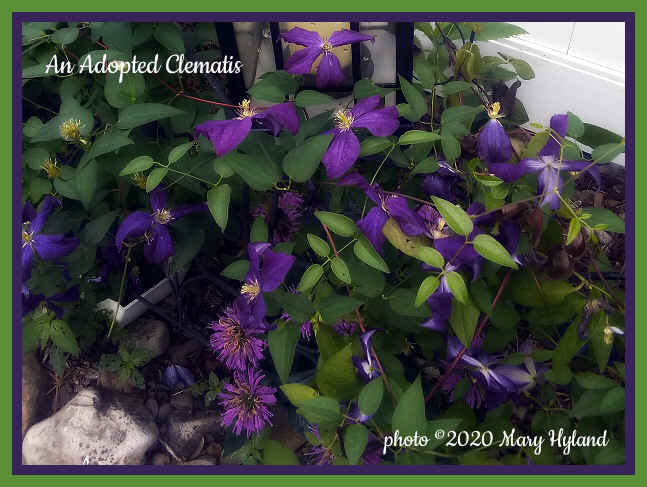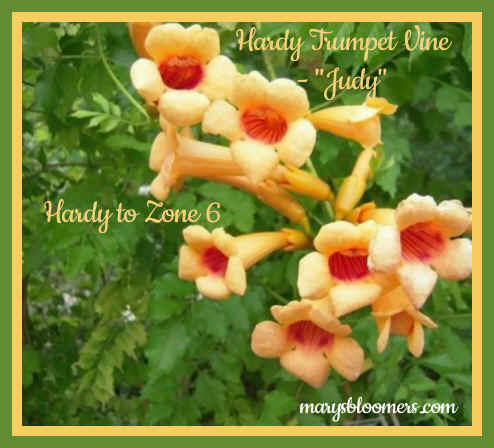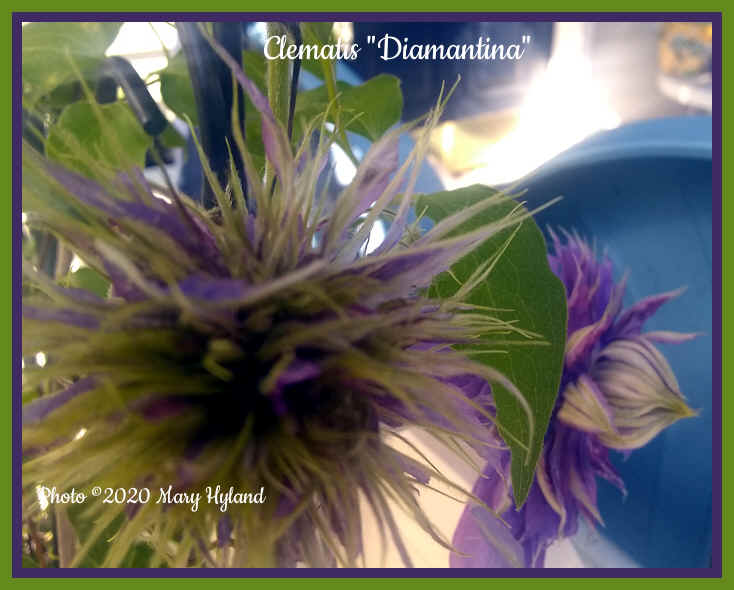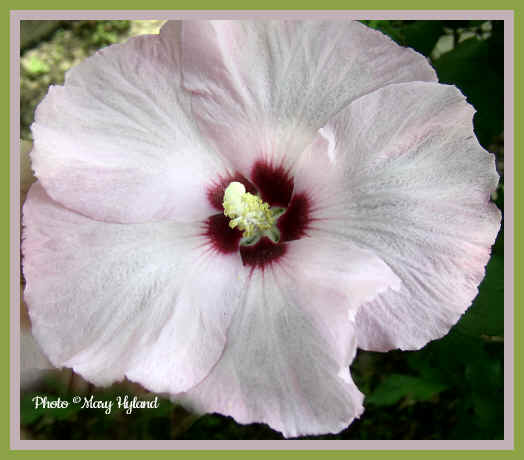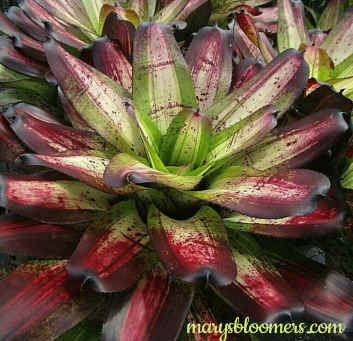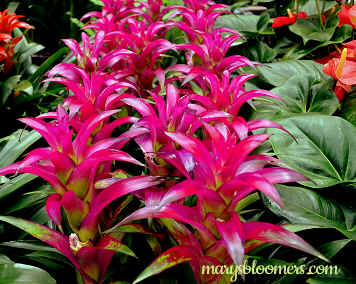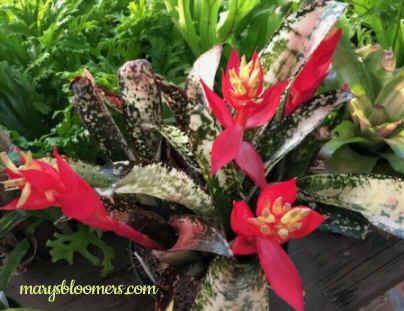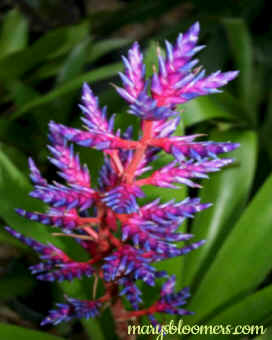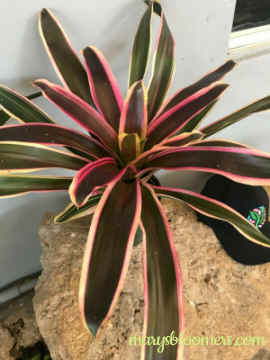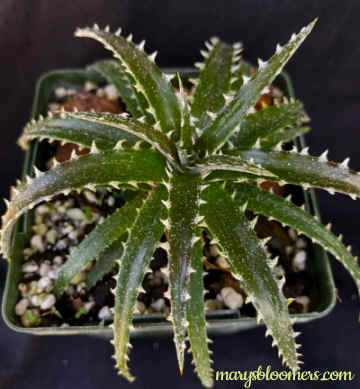|

|
|

|
|
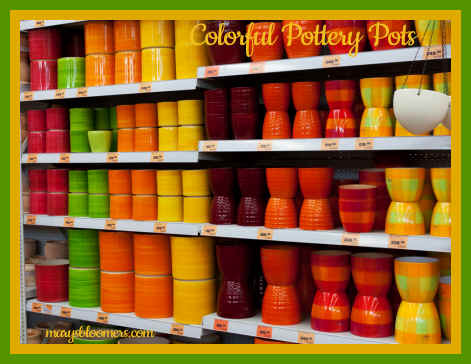 |
Many garden and houseplants may be
hardy to your area, and those that aren't, can be brought inside for the
winter.
The portability of potted and container
plants makes that easy.
You can create the tropical feel without in-ground tropical plants -
choose plants that give the impression of the tropics, and pop them into
colorful pots. You may be zone
5, but hanging and portable plants allow you a tropical garden using
zone 10 anyway.
Balcony, patio and terrace gardens look amazing when
combining them. Big, bold primary colors are best, but whites and
pastels in colorful pots and accessories works just as well.
|
Let's not forget vines.... most of
mine are in pots and guided by decorative trellis. If you have a
balcony, fence or terrace, brightly colored varieties of trumpet vine,
clematis, and honeysuckle will give you the height and a colorful,
fragrant backdrop. Pollinators will gather all day. Mine are hardy and
most are evergreen. Most
Clematis vines are hardy in Zones 4-10. There are many different
varieties, so you can combine early, mid- and late-season bloomers for a
rotating display. As the blooms mature, they take on some interesting
features.
Use color and interesting foliage
features all over. Don't use cactus, but use succulents.... they hold
water and their shapes and leaves have a tropical feel - don't design a
garden that looks like a hot and dry climate. Skip the average cactus,
roses, cottage, romantic and wildflower looks. Make it feel warm and
humid, even if it isn't, but don't make it look too
"florida". Shoot for jungle and rainforest designs. Do
use any plant you like, in the northeast. You're not going into the
garden in winter, so it why not? If you don't have much room for
houseplants, use a lot of annuals and bulbs. If you have a place for a
few grow light setups, that works great to keep plants that don't go
dormant, looking good in your home. Putting some plants in terrariums
also works well to keep your tropical plants in great shape until you
can put them back in the garden. But the best bet is using hardy
perennials that are bold and colorful that can stay outdoors.
An example of using northern cousins
of tropical flowers.... I am addicted to Giant Hibiscus. They're a
showcase in my garden from July until the hard frost. I've had to wait
to cut some stalks down until after Halloween. Nothing says
"tropical" like the 5-6 ft. tall hibiscus along my fence.
These are the hardy variety of hibiscus, for my Zone 6 garden and lower.
There are "Tropical"
Hibiscus varieties - especially for hot climates, that are not cold
hardy at all. I learned that one the hard way.
Beautiful and bold colors
are what you'll want to grow in-ground or outside in pots. They come up
every year, sport their 10-12" flowers all along the stalks. They
die down to the ground and then come back stronger and better every
summer. That's my number 1 pick for height in a tropical garden design.
Choose plants hardy to your region. They're awesome in-ground, in pots,
against walls, balcony and deck railings. You can't miss with these. You
can over winter tropical varieties indoors, but why bother if cold hardy
varieties are available?
The only care they need is staking
or tying, and I do it when the plants reach half their growth height.
Mine stand up against my white fence, and I only need to tie them with
twine or string to keep them from flopping onto their understory
neighbors. I trim out some of their errant stems as they grow along my
paths. The hibiscus is a workhorse garden plant. I have them in
semi-shade in one spot, full sun in others. Perfect plants for a cottage
garden design, or as a backdrop for Victorian, romantic, moonlight
garden, or wildflower garden styles. Bees and butterflies busy
themselves on the blooms all season. A family member of this plant that
is not tropical in style is the variety of hibiscus we all know - Rose
of Sharon. Use the plant that is named "Giant Hibiscus" for a
specifically tropical garden design.
The giant hibiscus comes in many
colors and shades. I'm on a waiting list for the blue. |
|
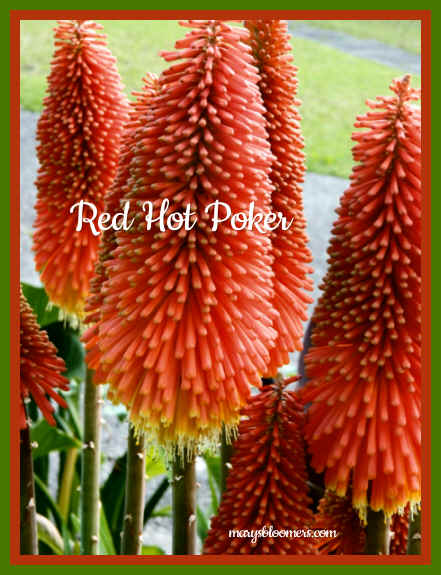
|
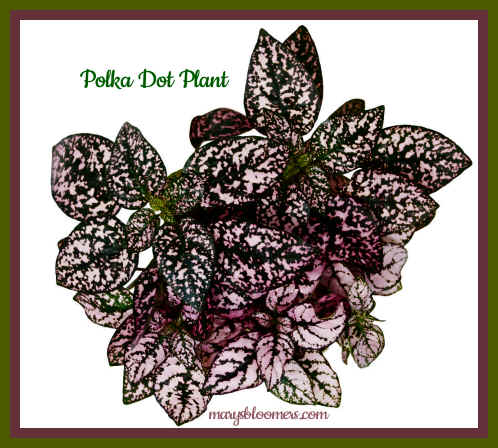
|
|
There are several
varieties of flowers, foliage plants, vines, ferns and groundcovers to choose from
for a tropical or rainforest feel.
Ferns and Ferneries - Visit our ferns page
for information and ideas for using and growing ferns in your shady and
partially sunny spots, in pots under tall plants, in corners, hanging,
and in nooks between potted plants. There are several hardy
varieties.
I successfully grow hardy Maidenhair, Japanese Painted, and Autumn ferns in Zone 6. Ferns
look right at home with other foliage plants in tropical or rainforest
garden themes, and they come in all sizes. Plant these in pots or
in-ground. They spread via underground rhizomes and seed by the spores
on the underside of their leaves. Get the best-behaved varieties that
aren't going to spread everywhere, or be vigilant about thinning the
plants if you plant them in-ground.
|
|

|

|
|

Striking
foliage and flowers, and easy to care for. These mostly- and partial shade dwellers
grow well in tropical climates, but need to be brought indoors in winter
in northern climates. I grow mine outdoors until frost, and then they
spend winter indoors. They are great houseplants that don't need a lot
of sun. The plants mentioned are hardy to about 20 degrees. Plant any
variety of bromeliads in clusters of brightly colored pots or
planters and bring them in for the winter. That's the way not to limit
the scope and variety in your tropical theme. I find them quite
beautiful, in a pre-historic kind of way. Gorgeous markings, unusual feature, and long-lasting bloom. Be aware that many types die after
blooming, but they have probably re-produced, and those teeny plants
become your new stock, and some don't ever flower. Some will burn badly
if given too much sun.
You
can choose some really stunning tropical bromeliads and just bring them
indoors in winter to decorate your home. I had quite a collection of
bromeliads, along with succulents, in a large, elevated flower bed
indoors. They grew best in indirect light, in windows with eastern or
western exposure. I had some in any room I wanted, because they are
spectacular growing under Grow Lights. They liked the humidity of my
bathroom, best. My plants put off lots of babies, called
"pups" that I popped off, and placed in cactus soil in pots to
develop a bunch of roots, before giving them a pot or roomy, community
planter.
In
the garden, I use them in big cactus and succulent bowls and dishes as
beautiful and portable accents. Brightly-colored plants are placed on
side tables, on pedestals, rocks, and on center tables in my seating
areas. Portability is key in the design of my urban garden. If you
grow these in a container or pot, be sure not to make them larger or
heavier than you can easily lift and move. Been there... You don't want
to have to remove the plants to climb up steps when it's time to bring
them indoors, or repot them once you have them in house. During the
summer season, when my fickle nature presents itself, I know I can just
move pots or an entire garden of them, all around my yard. Bromeliads in
a container mixed with succulents and evergreen ornamental grasses looks
amazing. If planting into a pot or container, use cactus soil. It's the
most well-draining potting mix..
**Cold
hardy, within the context of this article, means they are hardy down
to about 20 degrees.
The few specific plants mentioned below are the most cold hardy.
Choose any variety that will grow indoors during winter. Many varieties
take mixed exposures outdoors, full sun to shade.
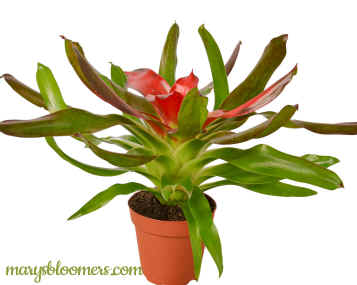 |
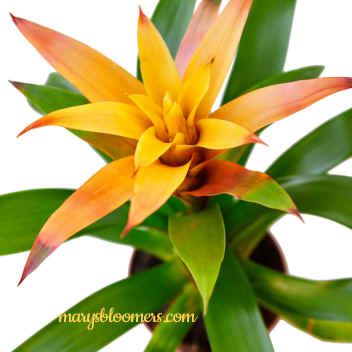 |
|
The
hardiest bromeliad varieties:
Aechmea
Aechmea -
largest family of cold hardy species, such as Aechmea Gamosepala and Aechmea
Cylindrata. Genus to consider-
A. apocalyptica, A. recurvata, A. winkleri, A. calyculata, A. caudata, A
kertesziae, A. distichantha and A. Nudicaulis. They
can be grown in well-draining soil as an accent, groundcover or focal
point,
Billbergia
There
are lots of c old hardy Billbergia hybrids with different flowers and
forms. Many of the toughest ones color nicely in sun, often with pink
spotted foliage. Billbergia Nutans, or Queens Tears have
soft and wavy green leaves that drape down. Billbergia
Pyramidalis 'Striata' or 'kyoto' have variegated foliage with yellow
stripes or white margins.
Neoregelia
I've
grown several of these beauties that are popular because of their
architectural foliage.
Neoregelias have a lot of hybrids to choose from, with many of the
leathery ones suitable for colder regions.
Neoregelia Spectabilis is a common plant with pink tips on the leaves,
and is quite hardy in sun or frost.
Spiky,
tight clusters of rosettes and a pretty clumping nature along with a
smaller size. Some have dark, burgundy leaves. Others are green,
bronze or black. The contrasting white spines look very ornate, and point forward and backward
Vriesa
suggestions: Vriesea Philippo Coburgii, V. Vagans, V.
Lubbersii, V. Corcovadensis and V. Flammea . All great choices if you
get frost. This very large hybrid is supposedly very hardy. Nice for the
focal point that adds height to your design.
|
Flower
and Foliage Bulbs
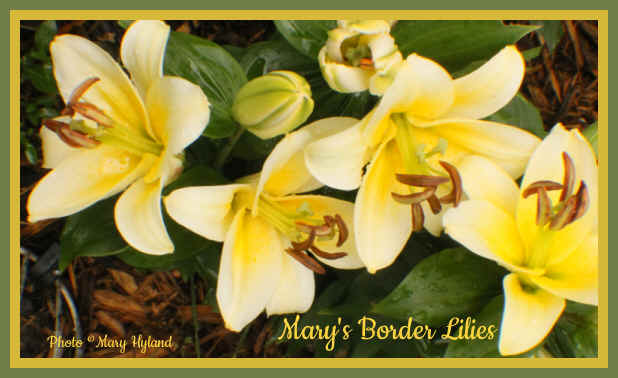
Plant brightly-colored flowering bulbs - Irises, dwarf
canna, medium-height Asian and border lilies that come in
bright colors. The lilies pictured above, and dwarf and
very colorful. Long-lasting bloom. These bulbs are hardy
perennials.
Choose
shorter or dwarf varieties to set among foliage and in
colorful pots, and choose those that will bloom in
succession, so that there's always a colorful display
among your foliage. Plant in staggered clusters of 5 among
and in back of foliage plants, in-ground or in pots, or
both.
Irises
and lilies come in lots of styles, for shade, damp areas,
wet areas, hot and sunny areas. Some varieties are
re-blooming.... in spring, and then again in fall. The
bulbs reproduce, so dividing the rhizomes and bulbs, and
planting elsewhere, is a bonus, along with their cold
hardiness. They grow in a lot of regions, and winter
doesn't bother them. Pest- and disease-resistant.
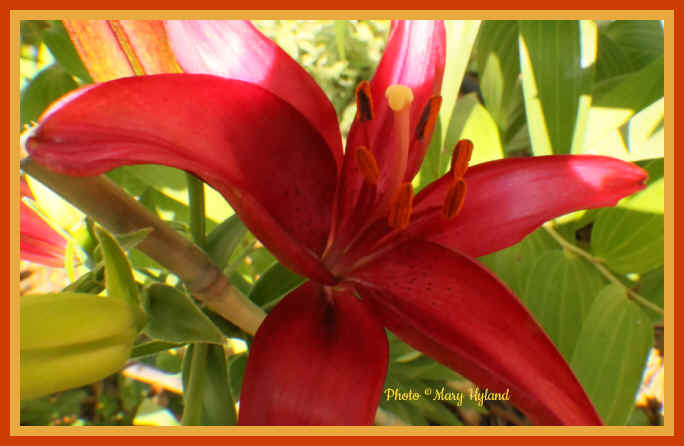
After
blooming, the iris's strappy leaves stay green for most of
the season. These can blend in with the foliage plants, or
you can cut them into "fans" shapes, or cut them
down altogether.
The leaves will continue to grow after a
hard cutting, until frost kills them in the fall. Both of these plants grow very well in
containers and pots.
Warning: All parts of the lily plants,
including the petals and bulb, are poisonous to cats. Keep
cats out of that garden. It apparently doesn't affect
feral cats, as they damage the gardens and torture birds
seemingly with impunity.
|
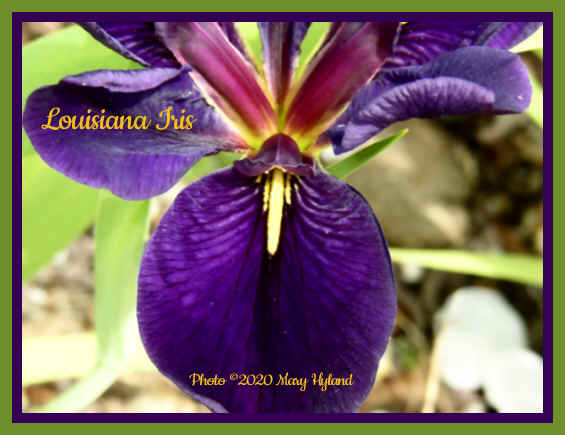
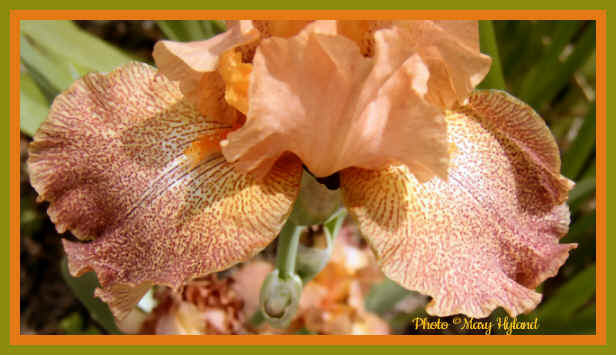
Both of these flowers are perennial, and the lily blooms
last a while. The fragrances add to your tropical garden.
You get the look of rainforest orchids in a zero-maintenance
plant. Pollinators love them. Irises generally bloom in
spring. Lilies bloom early and mid-summer.
The
fragrance of lilies is more pronounced in warm, humid weather,
and at night. They
make a great addition to a Moonlight Garden. The fragrance
of all lilies is very exotic. They love being in a
vase.... the fragrance of one bloom is aromatherapy.
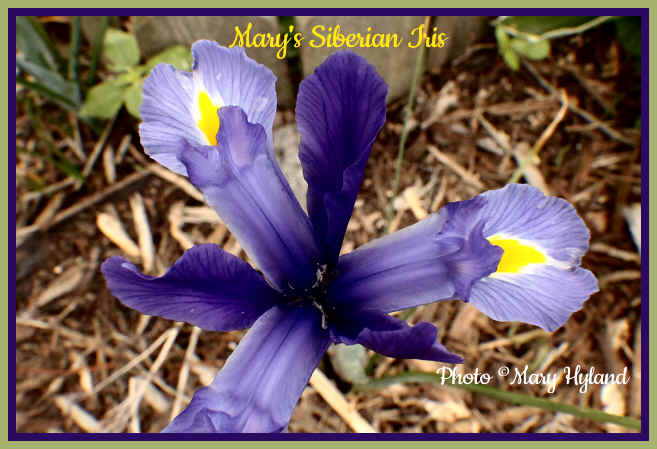
|
|
Stargazer
Lilies s
are an incredible sight when planted enmasse. So-named
because some of the blooms appear as if they're gazing up
at the sky.
One of
the most fragrant and easy-to-grow showcase lilies when
planted enmasse.
All lilies have large, long buds in a fantastic shape.
They look very pretty while you wait for the blooms. A
nice architectural plant that's quite photogenic.
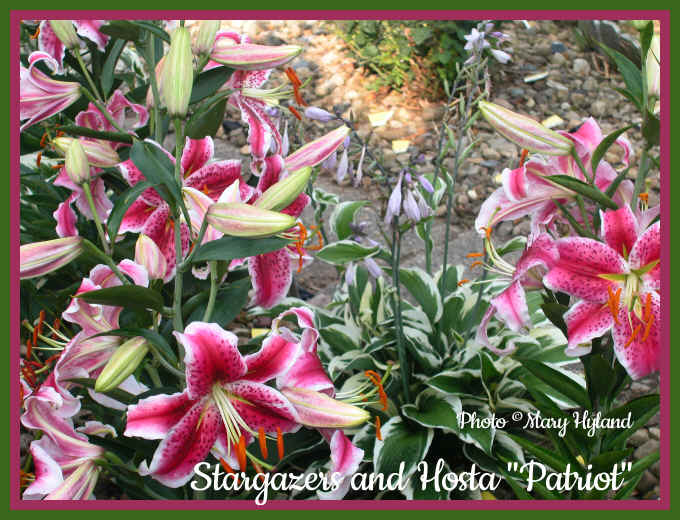
|
Stargazers are tall, and mature plants might need a plant support.
There are multiple blooms in a radius along the stalk. I've had one bulb
produce 8 large flowers in succession, along the stalk.
Mix them in with
interesting foliage plants in partial shade, Like hosta. Which also blooms
with big, fragrant spikes.
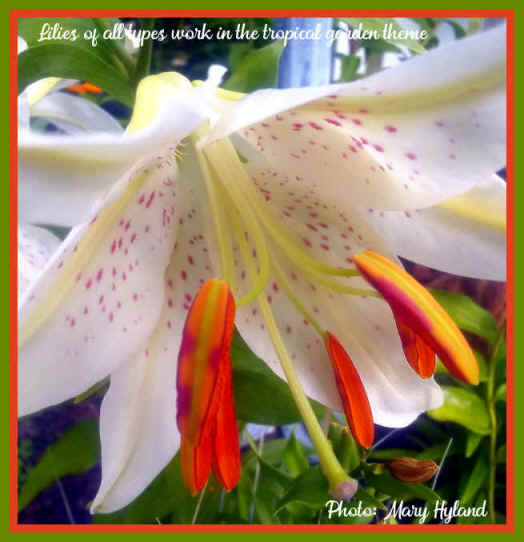
|
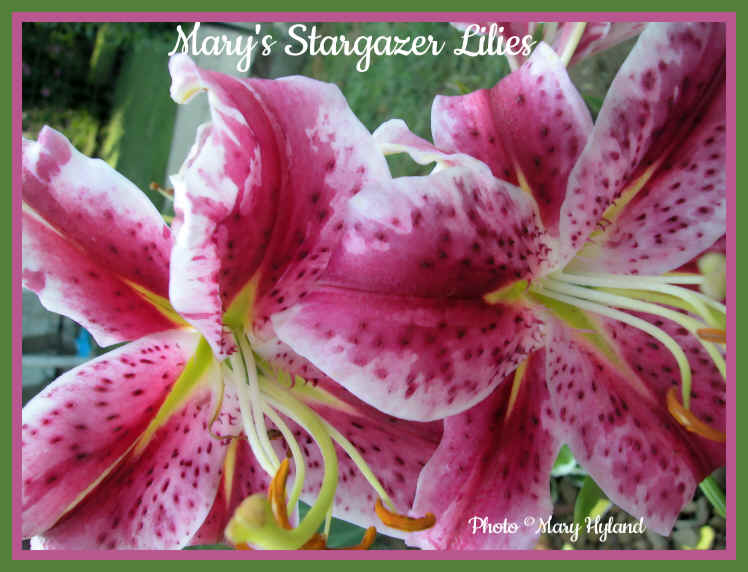 |
|
Don't be afraid to
combine color and interesting foliage all over the garden. Urban
gardeners can have entire small spaces filled with colorful pots that
contain dwarf trees grasses or giant foliage. Foliage can be placed
between or around the pots, in hanging planters, and vines attached o
railings, railing planters, and trellises Make the garden look fuller
by planting low, medium and tall plants. The eye will think there's a
bigger space and larger garden.
Don't use cactus, but
do use succulents.... they hold water and their shapes and leaves have
a tropical feel - don't design a garden that looks like a hot and dry
climate. Skip the spring bulbs, roses, cottage, romantic and
wildflower looks. Make it feel warm, wild and humid, even if it isn't,
but don't make it look too "florida". Hawaii is ok!
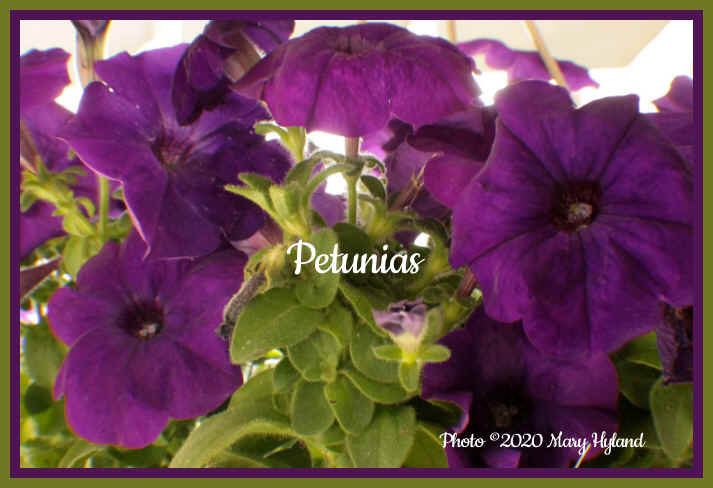
|
Shoot for jungle and
rainforest feel. Use hanging baskets for height and big color
statements.
Petunias... get the trailing type with large blooms, but not too
ruffly, skip the striped varieties, and hang them in pots. White, dark
blue, dark purple, and reds have great impact. I'm not a big petunia
fan, unless we're talking about the Mexican Petunia. The average
petunia is messy and needs pinching to prevent legginess. And i don't
car for the plant's sticky feel. Having said that, i still think
they're great for a tropical theme.
Do not hesitate to use any plant you like, in the northeast garden.
You're not going into the garden in winter, anyway, so why not?
If you don't have much room for houseplants, use a lot of annuals and
bulbs. If you have a place for a few grow light setups, that works
great to keep plants that don't go dormant, looking good in your home.
Putting some plants in terrariums also works well to keep your
tropical plants in great shape until you can put them back in the
garden. But the best bet is using hardy perennials that are bold and
colorful that can stay outdoors.
Continue
Reading On Page 2----> |
|
|
|
Click the pic on the
right to download a .pdf file for a very
pretty garden design plan from Better Homes and Gardens.
Plans can be multiplied for larger gardens, and plants can be swapped out for plants you prefer.
Garden
plans include a full-size color illustration, planting list and a detailed planting guide.
You can create your tropical garden using just about any of the plans
offered on this site. Just adapt the plantings to the look you want.
You can check the hardiness zone for the plants you like, choose plants that have the same
height and care attributes, and create away.
We
have lots more free garden designs for you to download-->
|
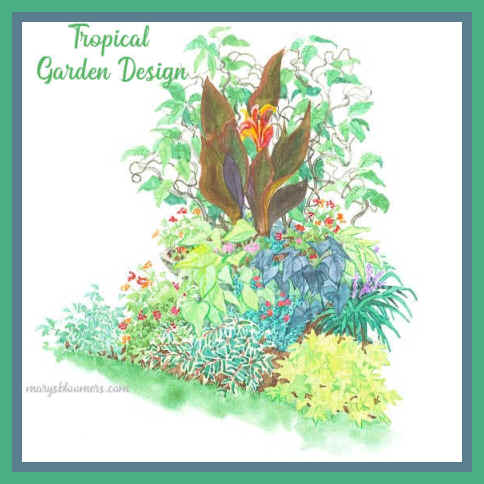 |
This
Tropical Garden Design Page 2--->
Detailed
Site Directory-->
Quick
Links
Vintage
Garden Graphics

Content, graphics and design ©2020 marysbloomers.com/eyecandee.com
All rights reserved
This
site uses Watermarkly Software

|







